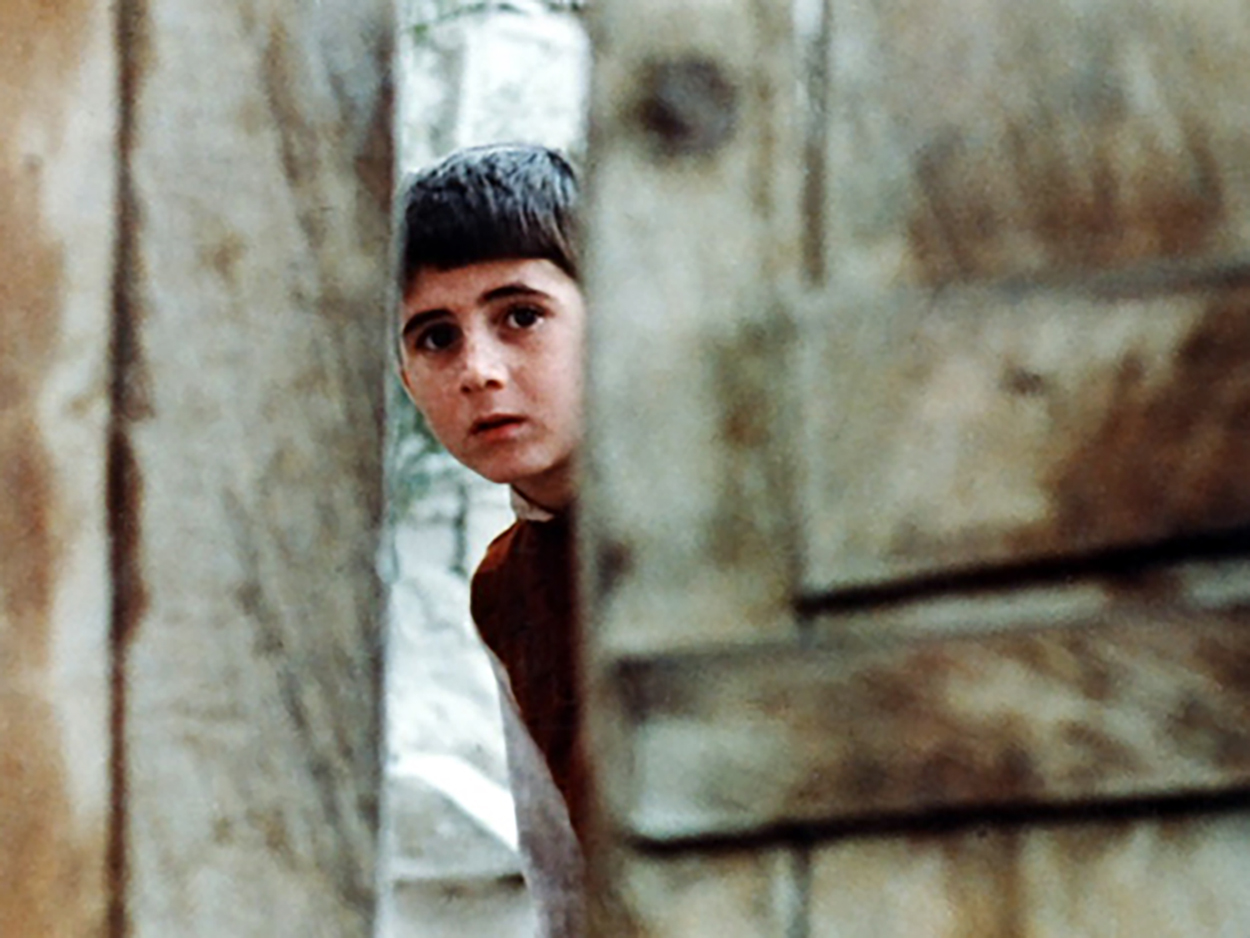
Eight-year-old Ahmed has mistakenly taken his friend Mohammad’s notebook. He wants to return it, or else his friend will be expelled from school. The boy determinedly sets out to find Mohammad’s home in the neighbouring village.
EN
“The journey forms part of our culture, and it is linked with mysticism; for us what is really important is not the goal we wish to attain, but the path we must travel to reach it.”
Abbas Kiarostami1
Abbas Kiarostami: I can’t bear narrative cinema. I leave the theater. The more it engages in storytelling and the better it does it, the greater my resistance to it. The only way to envision a new cinema is to have more regard for the spectator’s role. It’s necessary to envision an unfinished and incomplete cinema so that the spectator can intervene and fill the void, the lacks. Instead of making a film with a solid, impeccable structure, one should weaken the latter – yet keep in mind that one mustn’t drive the audience away! The solution may lie precisely in stimulating the viewers so that their presence is active and constructive. My belief is more in a form of art that seeks to create differences, a divergence among people, rather than a convergence with everyone in agreement. This way, there’s a diversity in the thinking and the reactions. Each one constructs his or her own film, whether one fits in with my film, or defends it, or opposes oneself to it. The members of the audience add some things so that they can defend their own viewpoint, and their undertaking is part of the evidence of the film. Engaging in war against great powers has to be done with a certain weakness, a lacking.
Jean-Luc Nancy: About the void: I remember a completely grey screen in a shot in Hiroshima mon amour. I was nineteen and already a little used to this – not that I remember how this came about – but I did understand that this was an image. At the same moment, next to me in the theater, an old woman cried out: ‘There’s a power failure!’ They’re two ways of looking: one of them understands that it’s a hole in the film, the other one doesn’t.
These holes, these moments of ‘failure’ are what makes for the construction. That’s my dream. I don’t expect things to change. I know about force of habit.
Still, there are signs that things are changing, by simply seeing how successful your films are. I realize that it’s not the same audience that goes to watch Life and Nothing More... and any old disaster movie, like Independence Day. But your films are being watched by many, and this success does show proof of something – since this audience had been saying for twenty years that cinema finished when neorealism ended. Godard has talked a lot about the death of cinema, he even overdid it. Since then, other cinemas – Chinese, Taiwanese, Korean – have made something else.
Jean-Luc Nancy in conversation with Abbas Kiarostami2
- 1Alberto Elena, The Cinema of Abbas Kiarostami (London: Saqi & Iran Heritage Foundation, 2005), 75.
- 2Jean-Luc Nancy, Abbas Kiarostami: L’Évidence du film / The Evidence of Film (Brussels: Yves Gevaert, 2001), 88.

